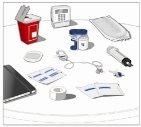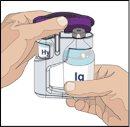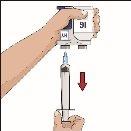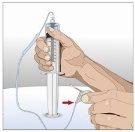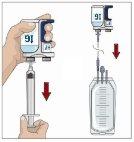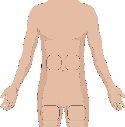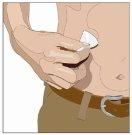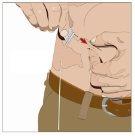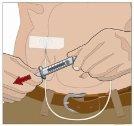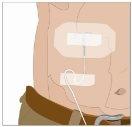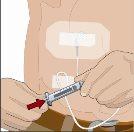
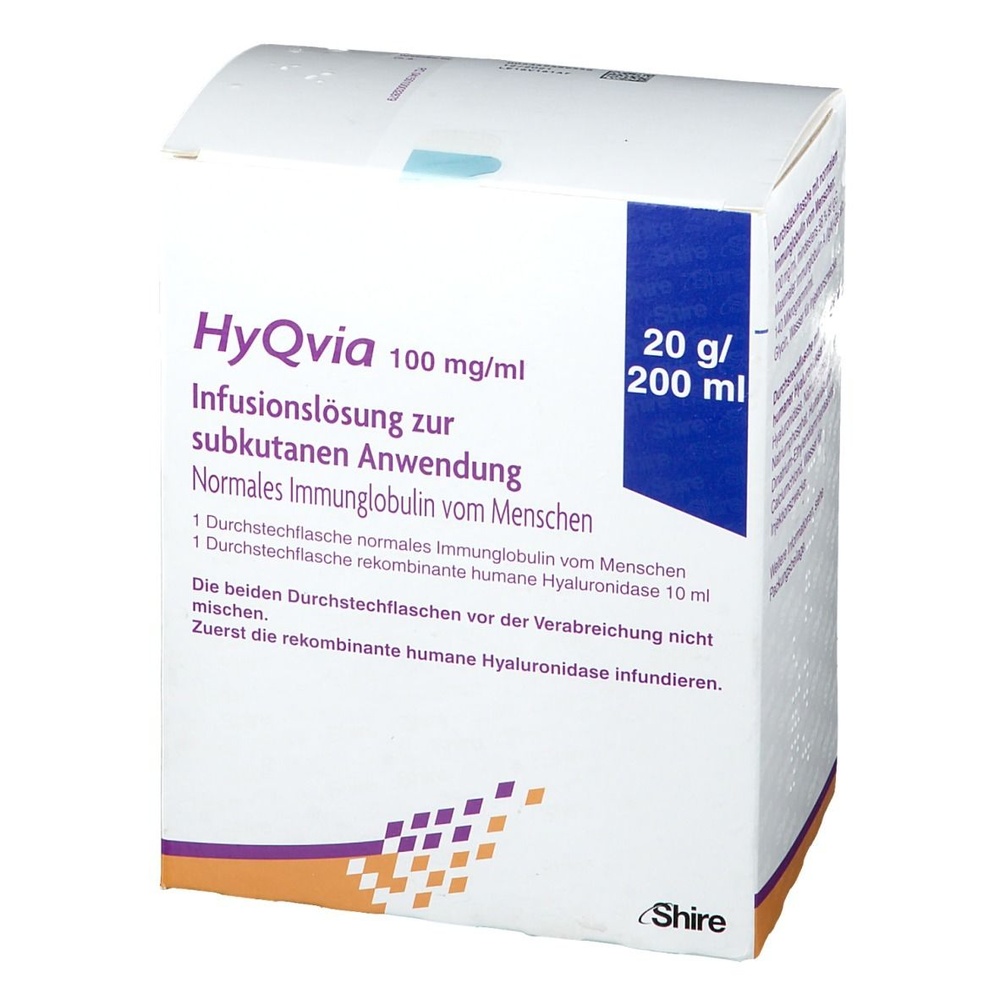
ХЮКВІА 100 мг/мл РОЗЧИН ДЛЯ ІНФУЗІЙ

Запитайте лікаря про рецепт на ХЮКВІА 100 мг/мл РОЗЧИН ДЛЯ ІНФУЗІЙ

Інструкція із застосування ХЮКВІА 100 мг/мл РОЗЧИН ДЛЯ ІНФУЗІЙ
Введення
Опис: інформація для користувача
HyQvia100мг/мл, розчин для інфузії
нормальна людська імуноглобуліна
Прочитайте уважно весь опис перед тим, як почати використовувати цей лікарський засіб, оскільки він містить важливу інформацію для вас.
- Збережіть цей опис, оскільки вам може знадобитися знову його прочитати.
- Якщо у вас виникли питання, проконсультуйтеся з вашим лікарем, фармацевтом або медсестрою.
- Цей лікарський засіб призначений тільки для вас, і не слід давати його іншим людям, навіть якщо вони мають相同ні симптоми, оскільки це може нашкодити їм.
- Якщо ви відчуваєте побічні ефекти, проконсультуйтеся з вашим лікарем, фармацевтом або медсестрою, навіть якщо це побічні ефекти, які не вказані в цьому описі. Див. розділ 4.
Зміст опису
- Що таке HyQvia і для чого вона використовується
- Що потрібно знати перед тим, як почати використовувати HyQvia
- Як використовувати HyQvia
- Можливі побічні ефекти
- Зберігання HyQvia
- Зміст упаковки та додаткова інформація
1. Що таке HyQvia і для чого вона використовується
Що таке HyQvia
HyQvia містить 2 розчини для інфузії (капельного введення) під шкіру (субкутанної інфузії або СК). Вона постачається в упаковці, яка містить:
- флакон з нормальною людською імуноглобуліною 10% (активний інгредієнт)
- флакон з рекомбінантною людською гіалуронідазою (речовиною, яка допомагає людській імуноглобулінній нормальній 10% потрапляти в кров).
Нормальна людська імуноглобуліна 10% належить до класу лікарських засобів, званих «нормальними людськими імуноглобулінами». Імуноглобуліни також називаються антитілами і знаходяться в крові здорових людей. Антитіла є частиною імунної системи (природних захисних механізмів організму) і допомагають організму боротися з інфекціями.
Як діє HyQvia
Рекомбінантна людська гіалуронідаза є білком, який полегшує інфузію (капельне введення) імуноглобулінів під шкіру і їх потрапляння в кровоток.
Флакон з імуноглобулінами готується з крові здорових людей. Імуноглобуліни виробляються імунною системою людського організму. Вони допомагають вашому організму боротися з інфекціями, викликаними бактеріями і вірусами, або підтримувати баланс імунної системи (що відоме як імуномодуляція). Лікарський засіб діє так само, як і імуноглобуліни, які природно присутні в крові.
Для чого використовується HyQvia
Замісна терапія у дорослих і дітей (від 0 до 18 років)
HyQvia використовується у пацієнтів з ослабленою імунною системою, які не мають достатньої кількості антитіл у крові і схильні до інфекцій, серед яких включаються такі групи:
- пацієнти, які народилися з нездатністю або зниженою здатністю виробляти антитіла (первинні імунодефіцити),
- пацієнти, які страждають від тяжких або повторюваних інфекцій через ослаблену імунну систему внаслідок інших захворювань або лікування (вторинні імунодефіцити).
Регулярні і достатні дози HyQvia можуть підвищити низькі рівні імуноглобулінів у вашій крові до нормальних рівнів (замісна терапія).
Імуномодуляційна терапія у дорослих, дітей і підлітків (від 0 до 18 років)
- HyQvia використовується у пацієнтів-дорослих, дітей і підлітків (від 0 до 18 років) з хронічною демієлінізаційною інфламаторною полінейропатією (ХДІП), типом автоімунного захворювання. ХДІП характеризується хронічною інфламацією периферичних нервів, яка викликає м'язову слабкість і/або оніміння, головним чином у ногах і руках. Гіпотеза полягає в тому, що власна система захисту організму атакує периферичні нерви і викликає пошкодження нервів та інфламацію. Гіпотеза полягає в тому, що імуноглобуліни, присутні в HyQvia, допомагають захистити нерви від пошкоджень, викликаних імунною системою.
2. Що потрібно знати перед тим, як почати використовувати HyQvia
Не вводьте і не інфузуйте HyQvia
- якщо ви алергічні на імуноглобуліни, гіалуронідазу, рекомбінантну гіалуронідазу або будь-який інший компонент цього лікарського засобу (перелічені в розділі 6, «Зміст упаковки та додаткова інформація»)
- якщо у вас є антитіла проти імуноглобуліну А (IgA) у крові. Це може статися, якщо у вас є дефіцит IgA. Оскільки HyQvia містить сліди IgA, ви можете відчувати алергічну реакцію
- в кровоносний судину (внутрішньовенно) або в м'яз (внутрішньом'язово).
Попередження та обережність
Проконсультуйтеся з вашим лікарем або медсестрою перед тим, як почати використовувати HyQvia.
- Перед лікуванням повідомте вашого лікаря або медичного працівника, якщо ви маєте одну з наступних обставин:
- Ви або ваш дитина можете бути алергічними на імуноглобуліни і не знаєте про це. Алергічні реакції, такі як раптове зниження артеріального тиску або анафілактичний шок (раптова падіння артеріального тиску разом з іншими симптомами, такими як набухання горла, труднощі з диханням і висипка на шкірі), є рідкими, але можуть виникнути, навіть якщо ви не мали проблем з подібними лікуваннями раніше. Ви маєте більший ризик алергічних реакцій, якщо у вас є дефіцит IgA з антитілами проти IgA. Ознаки або симптоми цих рідких алергічних реакцій включають:
- чувство легкості, головокружіння або втрату свідомості,
- висипка на шкірі і свербіж, набухання рота або горла, труднощі з диханням, свистячі звуки при диханні (свист),
- анормальний серцевий ритм, біль у грудній клітці, синій відтінок губ або пальців рук і ніг,
- розмита зір.
- Якщо ви відчуваєте будь-які з цих ознак під час інфузії, негайно повідомте вашого лікаря або медсестру. Вони вирішать, чи потрібно зменшити швидкість інфузії або повністю зупинити її.
Ваш лікар або медсестра інфузуватиме рекомбінантну людську гіалуронідазу (HY) повільно і обережно, а потім імуноглобулін (Ig), і контролюватиме вас під час першої інфузії, щоб у разі алергічної реакції її можна було виявити і негайно лікувати.
- Ваш лікар буде особливо обережним, якщо у вас є надмірна вага, ви є пацієнтом похилого віку, маєте цукровий діабет, тривалий час лежали в ліжку, маєте підвищений артеріальний тиск, маєте низький об'єм крові (гіповолемія), маєте проблеми з кровоносними судинами (васкулярні захворювання), маєте підвищену схильність до згортання крові (тромбофілія або тромботичні епізоди) або маєте захворювання, яке викликає загустіння крові (гіпервісозна кров). У цих обставинах імуноглобуліни можуть збільшити ризик інфаркту міокарда (серцевого нападу), інсульту, тромбозу легеневої артерії або блокування кровоносного судини ноги, хоча це дуже рідко.
- Якщо ви відчуваєте будь-які з цих ознак і симптомів під час інфузії, включаючи коротке дихання, біль, набухання кінцівки і біль у грудній клітці, негайно повідомте вашого лікаря або медсестру. Вони вирішать, чи потрібно зменшити швидкість інфузії або повністю зупинити її.
Ваш лікар або медсестра буде обережно спостерігати за вами під час інфузій, щоб у разі тромбоемболічних подій їх можна було виявити і негайно лікувати.
- Ви отримуватимете цей лікарський засіб у високих дозах протягом 1-2 днів, і якщо ви належите до груп крові А, В або АВ і страждаєте від підлягальної інфламаторної хвороби. У цих обставинах зазвичай повідомляється, що імуноглобуліни збільшують ризик руйнування червоних кров'яних тіл (гемолізу).
- Відповідно до повідомлень, імуноглобуліни можуть викликати інфламацію оболонок, які оточують мозок і спинний мозок (асептичний менінгіт).
- Якщо ви відчуваєте будь-які з цих ознак і симптомів після інфузії, включаючи сильний головний біль, жорсткість шиї, головокружіння, гарячку, світлобоязнь, нудоту і блювоту, негайно повідомте вашого лікаря або медсестру.
Ваш лікар вирішить, чи потрібно проводити додаткові дослідження і чи потрібно продовжувати лікування HyQvia.
Швидкість інфузії
Це дуже важливо інфузувати лікарський засіб з правильною швидкістю. Ваш лікар або медсестра порадить вам правильну швидкість інфузії для використання HyQvia вдома (див. розділ 3, «Як використовувати HyQvia»).
Контроль під час інфузії
Певні побічні ефекти можуть виникнути частіше, якщо:
- ви отримуєте HyQvia вперше
- ви приймали інший імуноглобулін і перейшли на HyQvia
- між інфузіями минуло багато часу (наприклад, більше 2 або 3 інтервалів інфузії).
- У таких випадках вас буде обережно контролювати під час першої інфузії і протягом першої години після закінчення інфузії.
У інших випадках вас буде обережно контролювати під час інфузії і протягом至少 20 хвилин після закінчення першої інфузії HyQvia.
Лікування вдома
Перед тим, як почати лікування вдома, вам буде призначено особу, яка буде спостерігати за вами. Вас і вашого спостерігача буде проінструктовано щодо виявлення перших ознак побічних ефектів, особливо алергічних реакцій. Ця особа допоможе вам спостерігати за можливими побічними ефектами. Під час інфузії вам потрібно буде спостерігати за першими ознаками побічних ефектів (для отримання додаткової інформації див. розділ 4, «Можливі побічні ефекти»).
- Якщо ви відчуваєте будь-який побічний ефект, ви або ваш спостерігач повинні негайно зупинити інфузію і звернутися до лікаря.
- Якщо ви відчуваєте сильний побічний ефект, ви або ваш спостерігач повинні негайно звернутися до лікаря за допомогою.
Поширення локалізованих інфекцій
Не інфузуйте HyQvia в або навколо інфікованої або запаленої ділянки шкіри, оскільки це може поширити інфекцію.
Не було виявлено довгочасних змін шкіри (хронічних) у клінічних дослідженнях. Ви повинні повідомити лікаря про будь-яку тривалу запалення, вузли або запалення, які з'являються в місці інфузії і тривають більше декількох днів.
Ефекти на аналізи крові
HyQvia містить багато різних антитіл, деякі з яких можуть вплинути на аналізи крові (серологічні тести).
- Перед тим, як пройти аналіз крові, повідомте вашого лікаря про лікування HyQvia.
Інформація про матеріал походження HyQvia
Нормальна людська імуноглобуліна 10% HyQvia і людська альбуміна (компонент рекомбінантної гіалуронідази) виробляються з людської плазми (рідкої частини крові). Коли лікарські засоби виготовляються з крові або плазми людини, необхідно вжити ряд заходів для запобігання можливому передаванню інфекцій пацієнтам. Серед них включаються:
- обережний відбір донорів крові і плазми для забезпечення виключення донорів, які перебувають в групі ризику зараження інфекційними захворюваннями
- аналіз кожної донорської плазми і плазмових сумішей для виявлення можливих вірусів або інфекцій.
Виробники цих продуктів також включають етапи у процесі виробництва для видалення/інактивації вірусів. Незважаючи на це, коли використовуються лікарські засоби, отримані з крові або плазми людини, можливість передавання інфекційних агентів не може бути повністю виключена. Це також стосується вірусів і інфекційних агентів, які виникають або мають невідому природу.
Захід, прийнятий для виробництва HyQvia, вважається ефективним для вірусів, які мають оболонку, таких як ВІЛ, вірус гепатиту Б (ВГБ) і вірус гепатиту С (ВГС), а також для вірусів, які не мають оболонки, таких як вірус гепатиту А і парвовірус Б19.
Імуноглобуліни не були пов'язані з інфекціями гепатиту А або парвовірусом Б19, ймовірно, тому що антитіла, пов'язані з цими інфекціями (і які знаходяться в HyQvia), забезпечують захист.
- Рекомендується обов'язково записувати наступну інформацію в щоденнику пацієнта кожен раз, коли йому вводиться доза HyQvia:
- назва продукту,
- дата введення,
- номер партії лікарського засобу і
- об'єм введення, швидкість введення, кількість і місце інфузії.
Діти і підлітки
Замісна терапія
Ті самі показання, дози і частота інфузії для дорослих застосовуються до дітей і підлітків (від 0 до 18 років).
Імуномодуляційна терапія у пацієнтів з ХДІП
Безпека і ефективність HyQvia не встановлені у дітей і підлітків (від 0 до 18 років) з ХДІП.
Інші лікарські засоби і HyQvia
Повідомте вашого лікаря, фармацевта або медсестру, якщо ви приймаєте, нещодавно приймали або можете приймати будь-який інший лікарський засіб.
Вакцини
HyQvia може зменшити ефект деяких вакцин, таких як вакцина проти кору, краснухи, епідемічного паротиту і вітряної віспи (вакцини, виготовлені з живими вірусами). Тому після прийому HyQvia вам може знадобитися чекати до 3 місяців перед тим, як приймати певні вакцини. Вам може знадобитися чекати до 1 року після прийому HyQvia, перш ніж ви зможете прийняти вакцину проти кору.
- Перед тим, як зробити вакцинацію, повідомте вашого лікаря або медсестру про лікування HyQvia.
Вагітність, лактація і фертильність
Дані про вплив тривалого використання рекомбінантної людської гіалуронідази на вагітність, лактацію і фертильність обмежені. HyQvia повинна використовуватися у вагітних жінок або під час лактації лише після консультації з лікарем.
Водіння транспортних засобів і використання машин
Під час лікування HyQvia пацієнти можуть відчувати побічні ефекти (наприклад, головокружіння або нудоту), які можуть вплинути на їхню здатність керувати транспортними засобами і використовувати машини. Якщо це відбувається, їм потрібно чекати, поки ці реакції зникнуть.
HyQvia містить натрій
Цей лікарський засіб містить від 5,0 до 60,5 мг натрію (основного компонента кухонної солі) в кожному флаконі з рекомбінантною людською гіалуронідазою HyQvia. Це відповідає 0,25-3% від максимальної добової норми споживання натрію, рекомендованої для дорослих.
Компонент Ig 10% практично не містить натрію.
3. Як використовувати HyQvia
Слідкуйте точно інструкціям щодо застосування цього лікарського засобу, вказаним вашим лікарем. У разі сумнівів проконсультуйтеся з лікарем знову.
HyQvia потрібно вводити під шкіру (підшкірна або СК ін'єкція).
Лікар або медсестра розпочне лікування HyQvia, але після того, як ви отримали перші інфузії під медичним наглядом та ви (та/або ваш опікун) були належно підготовлені, ви зможете використовувати лікарський засіб вдома. Ви та ваш лікар вирішите, чи можете ви використовувати HyQvia вдома. Не починайте лікування HyQvia вдома, доки не отримаєте повних інструкцій.
Дозування
Терапія заміщення
Ваш лікар розрахує правильну дозу на основі ваги тіла, попередніх лікування, які ви отримували, та вашої реакції на лікування. Рекомендована початкова доза - це така, що забезпечує 400-800 мг активної речовини на кг ваги тіла на місяць. Спочатку ви отримаєте чверть цієї дози з інтервалом у 1 тиждень. Наступні інфузії будуть поступово збільшуватися до більших доз з інтервалом у 3-4 тижні. Іноді лікар може порадити розділити більші дози та вводити їх у 2 пункти одночасно. Лікар також може коригувати дозу залежно від вашої реакції на лікування.
Імуномодуляційна терапія
Ваш лікар розрахує правильну дозу для вас на основі попередніх лікування, які ви отримували, та вашої реакції на лікування. Зазвичай лікування починається через 1-2 тижні після останньої інфузії імуноглобуліну, введеного підшкірно, з розрахованою тижневою еквівалентною дозою. Ваш лікар може коригувати дозу та частоту залежно від вашої реакції на лікування.
У разі перевищення добової дози (> 120 г) або якщо ви не можете терпіти об'єм інфузії імуноглобуліну, дозу можна розділити та вводити протягом кількох днів, залишаючи між дозами інтервал у 48-72 години для правильної абсорбції; введення гіалуронідази також повинно бути розділене відповідним чином.
Початок лікування
Лікування розпочне лікар або медсестра з досвідом лікування пацієнтів з ослабленою імунною системою (імунодефіцитом) та ПДІК, який навчить пацієнтів домашньому лікуванню. Вас буде спостерігати уважно під час інфузії та протягом至少 1 години після неї, щоб побачити, чи ви добре переносите лікарський засіб. Спочатку лікар або медсестра будуть використовувати повільну швидкість інфузії, а потім поступово збільшуватимуть її під час першої інфузії та наступних. Як тільки лікар або медсестра знайдуть для вас відповідну дозу та швидкість інфузії, ви зможете проводити домашнє лікування.
Домашнє лікування
Не використовувати HyQvia вдома, доки не отримаєте інструкцій та підготовки від лікаря.
Вас навчать:
- Асептичних технік інфузії,
- Використання інфузійної помпи або безперервної інфузійної помпи (якщо необхідно),
- Утримання щоденника пацієнта та
- Заходів, які слід проводити у разі серйозних побічних реакцій.
Ви повинні слідкувати точно інструкціям лікаря щодо дози, швидкості інфузії та планування інфузії HyQvia, щоб лікування було ефективним.
Рекомендуються наступні швидкості інфузії для Ig 10% на пункт інфузії:
Пацієнти<40кг | Пацієнти≥40кг | |||
Інтервал/хвилини | Перші 2 інфузії (мл/година/пункт інфузії) | 2-3 наступні інфузії (мл/година/пункт інфузії) | Перші 2 інфузії (мл/година/пункт інфузії) | 2-3 наступні інфузії (мл/година/пункт інфузії) |
10 хвилин | 5 | 10 | 10 | 10 |
10 хвилин | 10 | 20 | 30 | 30 |
10 хвилин | 20 | 40 | 60 | 120 |
10 хвилин | 40 | 80 | 120 | 240 |
Решта інфузії | 80 | 160 | 240 | 300 |
Швидкості інфузії, вказані вище, призначені для одного пункту інфузії. У разі якщо пацієнту потрібно 2 або 3 пункти інфузії, швидкості інфузії можна коригувати відповідно (подвоїти або потроїти залежно від максимальної швидкості інфузії помпи).
Якщо відбувається витік у пункті інфузії
Спитайте свого лікаря, фармацевта або медсестри, чи буде більш підходящим для вас інший розмір голки. Будь-яка зміна розміру голки повинна проводитися під наглядом лікаря.
Якщо ви використали більше HyQvia, ніж потрібно
Якщо ви вважаєте, що використали більше HyQvia, ніж потрібно, проконсультуйтеся з лікарем якнайшвидше.
Якщо ви забули використати HyQvia
Не вводьте подвійну дозу HyQvia, щоб компенсувати забуті дози. Якщо ви вважаєте, що забули дозу, проконсультуйтеся з лікарем якнайшвидше.
Якщо у вас є будь-які інші питання щодо використання цього лікарського засобу, спитайте свого лікаря, фармацевта або медсестри.
У наступному розділі надані детальні інструкції щодо використання.
| |
|
|
| |
|
|
|
|
|
|
|
|
|
|
| |
|
|
| Кут 90 градусів щодо шкіри
|
|
|
|
|
|
|
| |
| |
|
|
|
4. Можливі побічні ефекти
Як і всі ліки, цей препарат може викликати побічні ефекти, хоча не всі люди їх відчувають. Деякі побічні ефекти, такі як головний біль, озноб або біль у тілі, можна зменшити, зменшуючи швидкість інфузії
Важкі побічні ефекти
Інфузія препаратів, таких як HyQvia, іноді може викликати серйозні алергічні реакції, хоча й рідко. Ви можете відчувати раптове зниження артеріального тиску та в окремих випадках анафілактичний шок. Лікарі знають про ці можливі побічні ефекти та контролюватимуть вас під час та після початкових інфузій.
Типові ознаки або симптоми включають:
чуття головокружіння, запаморочення або втрату свідомості, висипку на шкірі та свербіж, набряк рота або горла, труднощі з диханням, свистячий звук при диханні, нерегулярний серцевий ритм, біль у грудній клітці, синій відтінок губ або пальців рук і ніг, розмитий зір.
- Якщо ви помітите будь-які з цих ознак під час інфузії, негайно повідомте про це своєму лікарю або медсестрі.
- Коли ви використовуєте HyQvia вдома, ви повинні проводити інфузію в присутності призначеного опікуна, який допоможе вам спостерігати за алергічними реакціями, зупинити інфузію та звернутися по допомогу, якщо це необхідно.
- Також дивіться розділ 2 цього листка про ризик алергічних реакцій та використання HyQvia вдома.
Дуже часті побічні ефекти (можуть виникнути у понад 1 з 10 інфузій):
Місцеві реакції в місці інфузії (включаючи всі перелічені нижче місця інфузії). Ці реакції зазвичай зникають за кілька днів.
Часті побічні ефекти (можуть виникнути у до 1 з 10 інфузій):
- головний біль
- нудота
- біль у животі/біль при пальпації живота
- червоність шкіри (еритема)
- реакції в місці інфузії, включаючи біль, дискомфорт, біль при пальпації, червоність, набряк та свербіж
- чуття жару, лихоманка
- слабкість (астенія), втома (фатига), відсутність енергії (летаргія) та загальне відчуття недуги
Рідкі побічні ефекти (можуть виникнути у до 1 з 100 інфузій):
- запаморочення
- мігрень
- чуття оніміння, поколювання, мурашок (парестезія)
- тремор
- швидкий серцевий ритм (тахікардія)
- високий артеріальний тиск (гіпертонія)
- набряк живота (дистенція живота)
- діарея
- вомітування
- висипка
- свербіж (прурит)
- висипка зі свербіжем (уртикарія)
- біль у м'язах (міалгія)
- біль у суглобах (артралгія)
- біль у спині
- біль у кінцівках (включаючи дискомфорт у кінцівках)
- біль у грудній клітці м'язово-кісткової системи
- ригідність суглобів
- реакції в місці інфузії (як зміна кольору, синяк, червоність [гематома], кровотеча [геморагія], прокол судини, вузол, індурація, набряк [едема], озноб, чуття паління, висипка)
- набряк геніталій
- Рідкісні побічні ефекти (можуть виникнути до 1 з 1000 інфузій):
- інсульт
- низький артеріальний тиск (гіпотонія)
- труднощі з диханням (диспноє)
- біль у пахвинній області
- коричневий колір сечі (гемосидеринурія)
- надмірна потовиділення (гіпергідроз)
- запалення місця інфузії
- жар у місці інфузії
- чуття оніміння, поколювання та мурашок у місці інфузії (парестезія в місці інфузії)
- позитивний результат тесту Кумбса
Частота невідома (не може бути оцінена на основі наявних даних):
- запалення оболонок, які оточують мозок і спинний мозок (асептичний менінгіт)
- алергічні реакції (гіперчутливість)
- втрата у місці інфузії
- псевдогрипозний синдром (грипоподібна хвороба)
Звіт про побічні ефекти
Якщо ви відчуваєте будь-який побічний ефект, проконсультуйтеся з лікарем, фармацевтом або медсестрою, навіть якщо це можливі побічні ефекти, які не перелічені в цьому листку. Ви також можете повідомити про них безпосередньо через Систему фармаковігілансу лікарських засобів для людини: www.notificaRAM.es. Надсилаючи повідомлення про побічні ефекти, ви можете допомогти надати більше інформації про безпеку цього лікарського засобу.
5. Зберігання HyQvia
Тримайте цей лікарський засіб поза зоною видимості та досягнення дітей.
Не використовуйте цей лікарський засіб після дати закінчення терміну зберігання, вказаної на етикетці та коробці після CAD. Дата закінчення терміну зберігання - останній день місяця, який вказано.
Зберігайте у холодильнику (між 2 °C - 8 °C). Не заморожуйте.
Не агітуйте.
Зберігайте флакони в зовнішній упаковці для захисту їх від світла.
Не використовуйте цей лікарський засіб, якщо ви помітите, що розчини мають мутний вигляд або якщо вони містять частинки чи осад.
Після відкриття викидайте будь-які залишки незастосованого розчину з флаконів.
Лікарські засоби не повинні викидатися у каналізацію чи сміття. Спитайте у фармацевта, як позбутися упаковок та лікарських засобів, які вам більше не потрібні. Таким чином, ви допоможете захистити навколишнє середовище.
6. Зміст упаковки та додаткова інформація
Склад HyQvia
HyQvia - це подвійний флакон, який містить:
- розчин рекомбінантної гіалуронідази людини (Етап 1 HyQvia/Інфузія спочатку) та
- розчин нормальної імуноглобуліну людини 10% (Етап 2 HyQvia/Інфузія вдруге).
Зміст кожного флакону описано нижче:
- Рекомбінантна гіалуронідаза людини
Цей флакон містить рекомбінантну гіалуронідазу людини.
Інші компоненти - хлорид натрію, фосфат натрію, альбумін людини, етилендіамінтетраоцетат (EDTA) динатрію, хлорид кальцію та вода для ін'єкційних препаратів (див. також розділ 2, "HyQvia містить натрій").
- Нормальна імуноглобуліна людини 10%
1 мл розчину цього флакону містить 100 мг нормальної імуноглобуліну людини, з якої щонайменше 98% - імуноглобуліна G (IgG).
Активний інгредієнт HyQvia - нормальна імуноглобуліна людини. Цей лікарський засіб містить сліди імуноглобуліну A (IgA) (не більше 140 мкг/мл, 37 мкг у середньому).
Інші компоненти цього флакону - гліцин та вода для ін'єкційних препаратів.
Вигляд продуктута зміст упаковки
HyQvia 100 мг/мл розчин для підшкірної інфузії (інфузія під шкіру).
HyQvia постачається в упаковці, яка містить:
- флакон з рекомбінантною гіалуронідазою людини та
- флакон з нормальної імуноглобуліну людини 10%.
Рекомбінантна гіалуронідаза людини - прозорий та безбарвний розчин.
Нормальна імуноглобуліна людини 10% - прозорий та безбарвний або легкий жовтуватий розчин.
Доступні наступні розміри упаковок:
Рекомбінантна гіалуронідаза людини | Нормальна імуноглобуліна людини10% | |
Об'єм (мл) | Білок (г) | Об'єм (мл) |
1,25 | 2,5 | 25 |
2,5 | 5 | 50 |
5 | 10 | 100 |
10 | 20 | 200 |
15 | 30 | 300 |
Можливо, не всі розміри упаковок будуть доступні.
Уповноважений на отримання дозволу на розміщення лікарського засобу на ринку тавідповідальнийза виробництво
Уповноважений на отримання дозволу на розміщення лікарського засобу на ринку:
Baxalta Innovations GmbH
Industriestrasse 67
A‑1221 Відень
Австрія
Відповідальний за виробництво:
Baxalta Belgium Manufacturing SA
Boulevard René Branquart 80
B‑7860 Lessines
Бельгія
Ви можете звернутися за додатковою інформацією про цей лікарський засіб до місцевого представника уповноваженого на отримання дозволу на розміщення лікарського засобу на ринку:
Takeda Farmacéutica España, S.A
Тел: +34 917 90 42 22
Дата останнього перегляду цього листка: 05/2024.
Інші джерела інформації
Детальна інформація про цей лікарський засіб доступна на сайті Європейського агентства з лікарських засобів: http://www.ema.europa.eu
- Країна реєстрації
- Діючі речовини
- Потрібен рецептТак
- Виробник
- Інформація є довідковою і не є медичною порадою. Перед прийомом будь-яких препаратів обов'язково проконсультуйтеся з лікарем. Oladoctor не несе відповідальності за медичні рішення, прийняті на основі цього контенту.
- Альтернативи до ХЮКВІА 100 мг/мл РОЗЧИН ДЛЯ ІНФУЗІЙФорма випуску: РОЗЧИН ДЛЯ ІН'ЄКЦІЙ, 165 мг/млДіючі речовини: immunoglobulins, normal human, for extravascular adm.Виробник: Octapharma S.A.Потрібен рецептФорма випуску: РОЗЧИН ДЛЯ ІН'ЄКЦІЙ, 200 мг/млДіючі речовини: immunoglobulins, normal human, for extravascular adm.Виробник: Baxalta Innovations GmbhПотрібен рецептФорма випуску: РОЗЧИН ДЛЯ ІН'ЄКЦІЙ, 200 мг/млДіючі речовини: immunoglobulins, normal human, for extravascular adm.Виробник: Csl Behring GmbhПотрібен рецепт
Аналоги ХЮКВІА 100 мг/мл РОЗЧИН ДЛЯ ІНФУЗІЙ в інших країнах
Найкращі аналоги з тією самою діючою речовиною та терапевтичним ефектом.
Аналог ХЮКВІА 100 мг/мл РОЗЧИН ДЛЯ ІНФУЗІЙ у Польша
Аналог ХЮКВІА 100 мг/мл РОЗЧИН ДЛЯ ІНФУЗІЙ у Украина
Лікарі онлайн щодо ХЮКВІА 100 мг/мл РОЗЧИН ДЛЯ ІНФУЗІЙ
Консультація щодо дозування, побічних ефектів, взаємодій, протипоказань та поновлення рецепта на ХЮКВІА 100 мг/мл РОЗЧИН ДЛЯ ІНФУЗІЙ – за рішенням лікаря та згідно з місцевими правилами.




